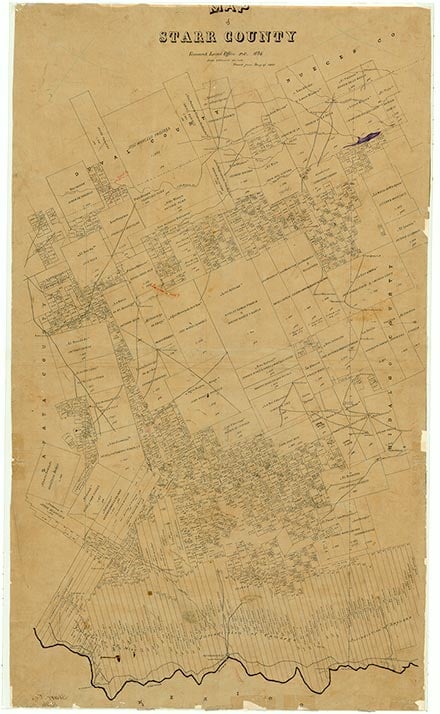Buena Vista

Roma-Los Saenz is a port of entry on U.S. Highway 83 and the Rio Grande, directly across from Ciudad Miguel Alemán, Tamaulipas, Mexico, in southwestern Starr County. Roma and Los Saenz are actually two adjoining settlements that have incorporated jointly; Spanish is the primary language. Corrales de Saenz was founded in the mid-1760s by local ranchers Miguel, Gerónimo, and Juan Ángel Saenz, followers of José de Escandón from the Spanish colonial city of Mier, and it is possible that what came to be known as Roma-Los Saenz and Ciudad Miguel Alemán were originally part of the same city, San Pedro de Roma, Tamaulipas. The area was known as Buena Vista and then Garcia Ranch. In 1848, when it became a part of the United States, the name was changed to Roma, suggested by the Oblates of Mary Immaculate, who founded a mission there in the mid-1850s. The settlement had the only post office in Starr County in 1848. From 1850 to 1900 Roma was the westernmost port on the Rio Grande for the flatboats and steamers carrying cotton downstream. In 1904 it had a population of 521. During the years of the Mexican Revolution, 1910–17, many refugees sought haven in the historic "Pink House," now the Knights of Columbus Hall. In 1925 the railroad was extended to Rio Grande City and new roads were built to Roma. The first international bridge, a unique suspension bridge, was constructed in 1927; a new concrete bridge was built in 1979. In the early 1930s oil and gas were discovered near Roma, and many oil-crew families moved there. In 1931 Roma had a population of 1,000 and thirty businesses. Melon-packing plants and two cattle-auction barns were built in the early 1950s. The completion of Falcon Dam in 1953 assured control of flooding in the area. Fr. Pierre Keralum designed the first church in 1854, the tower of which forms a part of Our Lady of Refuge Church, dedicated in 1965. An 1840 structure houses the Roma Historical Museum, organized in 1971, when Roma was designated a national historic district. More than a dozen homes have been restored and marked with Texas state medallions around the main plaza, where the Marlon Brando movie Viva Zapata was made. Roma is one of the best remaining Spanish colonial townsites in the lower Rio Grande Valley. Many of the structures, including the Pink House and the Manuel Guerra home, were designed by noted German architect Heinrich Portscheller during the 1880s. The population in Roma-Los Saenz has grown steadily from 2,154 in 1970 to 8,059 in 1990. Since 1979 a new water plant, a 500,000-gallon elevated water tank, a new fire and police building, and a new community center have been constructed. By 1990 dry-land farming to the north, with 100,000 acres of irrigated river bottom around the city, provided a strong agricultural base. In 1990 the new Roma High School was dedicated 1½ miles west of the city. In 1991 Roma-Los Saenz had forty-five businesses. The population was 9,617 in 2000.
Dick D. Heller, Jr. | © TSHA

Adapted from the official Handbook of Texas, a state encyclopedia developed by Texas State Historical Association (TSHA). It is an authoritative source of trusted historical records.

- ✅ Adoption Status:
- This place is available for adoption! Available for adoption!
- Adopted by:
- Your name goes here
- Dedication Message:
- Your message goes here
Belongs to
Buena Vista is part of or belongs to the following places:
Currently Exists
No
Place type
Buena Vista is classified as a Town
Associated Names
- [1]
- (Roma-Los Saenz)
Location
Latitude: 26.29423640Longitude: -98.61141170
Has Post Office
No
Is Incorporated
No
